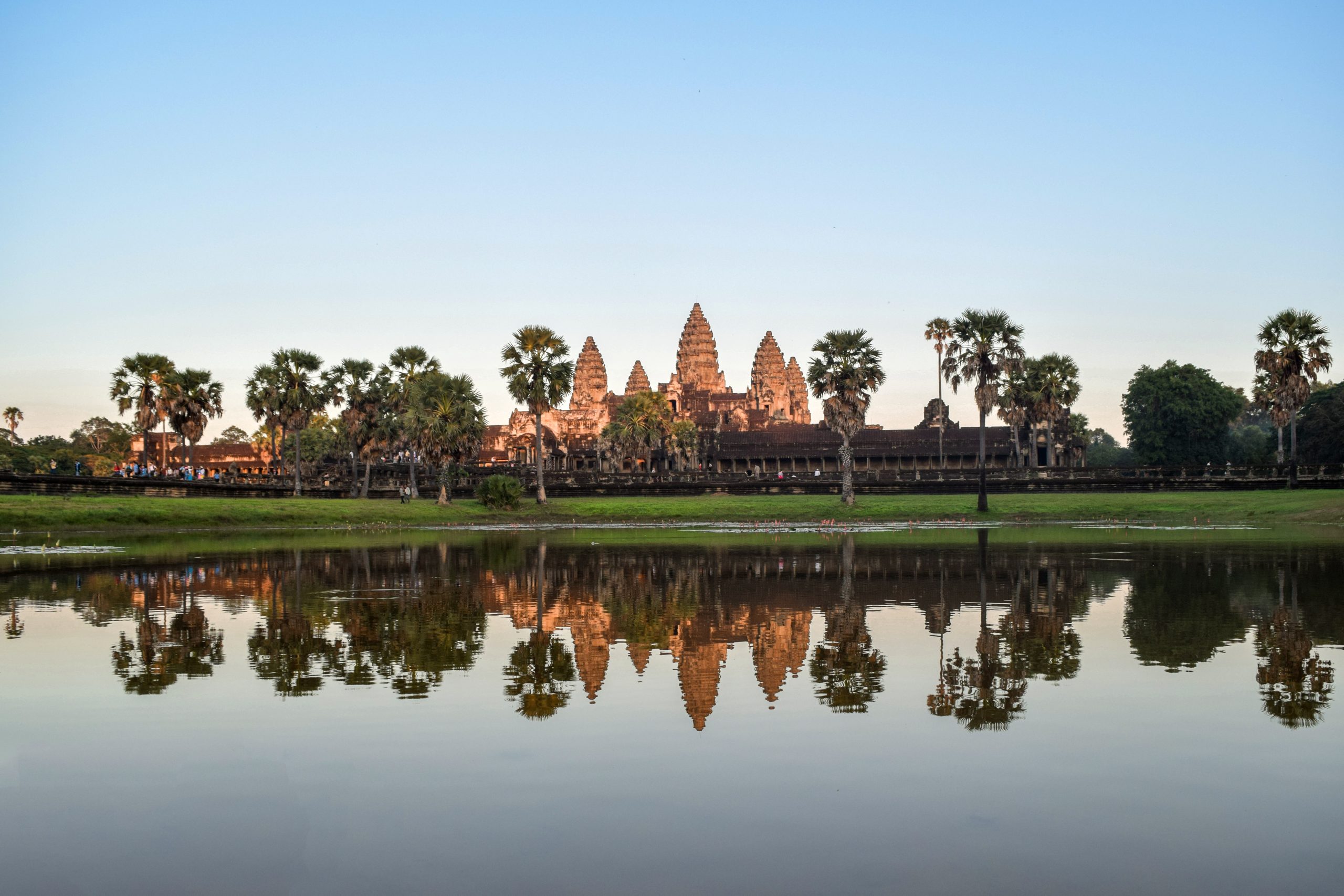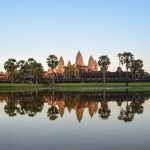Navigating Cambodian Cultural Sensitivities: A Traveler’s Guide
Cambodia, a country rich in history and culture, offers travelers a unique and immersive experience. Its ancient temples, lush landscapes, and vibrant communities make it a must-visit destination. However, as a responsible traveler, it’s essential to be aware of and respect Cambodian cultural sensitivities. In this travel blog, Green Sun Travel will guide you through the do’s and don’ts of Cambodian culture to ensure a meaningful and enjoyable journey.
Cambodian cultural sensitivities
Greetings and Politeness:
For the first Cambodian cultural sensitivities, Cambodian greetings are steeped in tradition and politeness. The “sampeah” is more than just a gesture; it’s a profound expression of respect. When you press your palms together and bow slightly, you’re acknowledging the other person with a deep sense of reverence. This gesture is not limited to mere greetings; it’s also used when expressing gratitude and bidding farewell. When someone offers you a sampeah, it’s customary to return the gesture with a smile and your own sampeah. This exchange fosters a sense of connection and mutual respect, setting the tone for your interactions in Cambodia.
Clothing:
Dressing appropriately when visiting religious sites in Cambodia is not just a matter of modesty; it’s a sign of respect for the deeply ingrained spirituality and culture of the country. Cambodian cultural sensitivities for temples and pagodas are sacred places, and covering your shoulders and knees is a way to show reverence. By doing so, you’re demonstrating your respect for the religious practices and the people who maintain these sites. Bringing suitable clothing for temple visits is not only about following the rules; it’s about actively participating in and appreciating the rich spiritual heritage of Cambodia.
Shoes:
Removing your shoes before entering someone’s home or a sacred space is a gesture that signifies both respect and cleanliness. It’s a way of leaving the dirt of the outside world behind and entering a space that’s considered sacred or personal. The presence of shoe racks or designated areas for footwear highlights the importance of this practice. By removing your shoes, you’re acknowledging the cultural significance of maintaining a clean and respectful environment, whether it’s someone’s home or a temple.
Public Displays of Affection:
Cambodian cultural sensitivities places a strong emphasis on modesty and decorum in public spaces. While affectionate behavior is entirely acceptable in private settings, engaging in public displays of affection, such as kissing and hugging, is considered impolite. This cultural norm is rooted in a desire to maintain a level of decorum and avoid making others uncomfortable in shared spaces. Holding hands is generally seen as an acceptable way for couples to express their affection publicly without crossing cultural boundaries.
Feet:
Understanding the significance of the feet in Cambodian culture is essential for showing respect. Feet are considered the lowest part of the body, both physically and spiritually. Pointing your feet at people, religious icons, or objects of respect is seen as disrespectful, as it implies a lack of regard for their sacredness. Conversely, the head is considered the highest and most sacred part of the body, and touching someone’s head without their explicit permission is considered impolite. Being aware of these cultural norms ensures that you do not inadvertently offend or disrespect others in Cambodia.
Monasteries and Temples:
When you step into the serene world of Cambodian temples and monasteries, it’s essential to embrace a respectful demeanor. These places are the heart of Cambodia’s spiritual and cultural heritage, and the customs surrounding their visitation reflect this significance. Speaking softly and avoiding loud conversations is not just a matter of maintaining a tranquil atmosphere; it’s a sign of respect for the sanctity of the space. In addition to your words, your actions matter greatly. Do not climb on ancient ruins or touch religious objects, as these actions can damage the delicate structures and artifacts, and, more importantly, show disregard for their cultural value. Monks, who often reside and pray in these spaces, should not be disturbed during their activities. Finally, when it comes to photography, seek permission before taking photos within these sacred spaces. Not only does this show respect for the place and its worshippers, but it also ensures that you capture the essence of these remarkable sites with mindfulness.
Photography:

Photography is a wonderful way to capture memories of your Cambodian journey, but it should be approached with sensitivity. Always ask for permission before taking photos of people, especially in rural areas. Cambodians, like people everywhere, may have personal or cultural reasons for not wanting their picture taken. By requesting permission, you respect their autonomy and their right to decide whether or not they want to be photographed. It’s important to remember that photography should not come at the expense of someone’s comfort or privacy. In some cases, your genuine interest and polite approach may even lead to more meaningful interactions and a better understanding of the local culture.
Cultural Awareness:
Cambodia’s history, particularly the period of the Khmer Rouge, is marked by profound suffering and pain. While it’s valuable to learn about this history, approaching the subject with empathy and sensitivity is of utmost importance when discussing it with locals. Many Cambodians were deeply affected by this traumatic era, and some may still carry the scars of those times. When engaging in conversations about this sensitive topic, be open to listening, offer your condolences when appropriate, and avoid prying or insensitive questions. Showing empathy and understanding towards the history of Cambodia can go a long way in building meaningful connections with the people you meet.
Respect for Elders:
Respect for elders is a cornerstone of Cambodian cultural sensitivities. In your interactions, show deference to older individuals, whether it’s through polite language or gestures of respect. Greeting them with a sampeah, as discussed earlier, is an excellent way to express your respect. Recognize the wisdom and experience that comes with age and be attentive to the guidance and stories that older Cambodians may share with you. This cultural norm not only shows respect but also enriches your travel experience by fostering meaningful connections and learning opportunities.
Bargaining:
Bargaining is a common practice in Cambodian markets and when dealing with street vendors. However, it should be approached with politeness and respect. Remember that many Cambodians rely on their income from selling goods, and even a small amount of money can make a significant difference in their lives. When bargaining, aim for a fair price that both you and the vendor can agree on. Avoid excessive haggling, as it can come across as disrespectful and unfair. This practice not only helps you secure a good deal but also supports the local economy and respects the dignity of those who earn a living through their work.
Tipping:
Tipping is a gesture of appreciation that transcends language and can leave a lasting positive impression. In Cambodia, it’s not mandatory, but it is certainly appreciated, particularly in the tourism industry. When you receive good service at hotels, restaurants, or during tours, a small gratuity can go a long way in expressing your satisfaction. Keep in mind that Cambodia is still a developing country, and many service workers rely on tips to supplement their income. Your generosity can make a significant difference in their livelihoods. Whether it’s rounding up the bill or adding a percentage, tipping is a way to show your gratitude and support the local economy, all while leaving a warm and lasting memory of your visit.
Language:
Language can be a bridge that connects travelers to the heart of the culture they’re exploring. While English is commonly spoken in tourist areas, making an effort to learn a few basic Khmer phrases can greatly enhance your travel experience. Locals are often delighted when visitors try to communicate in their native language, even if it’s just a few greetings and pleasantries. Speaking a bit of Khmer can break the ice, create genuine connections, and demonstrate your respect for Cambodian culture. Learning simple phrases like “sous-dey” for “hello” or “aw-koon” for “thank you” can go a long way in showing that you’re interested in their culture and eager to engage with the local community.
Food Etiquette:
Cambodian cuisine is a delightful journey for the senses, but enjoying it with locals comes with its own set of cultural norms. When dining with Cambodians, it’s customary to wait for the host to begin the meal before you start eating. This practice shows respect for the person who is providing the meal and aligns with the Cambodian value of hospitality. Additionally, it’s important to be mindful of how you use your hands. In Cambodian culture, the left hand is traditionally reserved for personal hygiene, so using it for eating is considered impolite. Stick to your right hand for handling food and utensils. By respecting these food etiquettes, you not only savor the flavors of Cambodia but also appreciate the cultural nuances that make dining in this country an enriching experience.
Conclusion
In conclusion, Cambodia is a captivating destination with a rich cultural heritage. To make the most of your trip, it’s crucial to understand and respect Cambodian cultural sensitivities. By following these guidelines, you’ll not only have a more rewarding and immersive travel experience but also leave a positive impression on the welcoming people of Cambodia. So, pack your bags, embrace the culture, and embark on an unforgettable journey through the heart of Southeast Asia.









Създаване на личен профил
Can you be more specific about the content of your article? After reading it, I still have some doubts. Hope you can help me.
March 19, 2024 at 2:58 pm
Polecenie Binance
Your article helped me a lot, is there any more related content? Thanks!
April 17, 2024 at 1:08 am
Регистрация на binance
Can you be more specific about the content of your article? After reading it, I still have some doubts. Hope you can help me.
April 19, 2024 at 3:19 am
binance Norādījuma kods
Thanks for sharing. I read many of your blog posts, cool, your blog is very good.
April 20, 2024 at 6:42 am